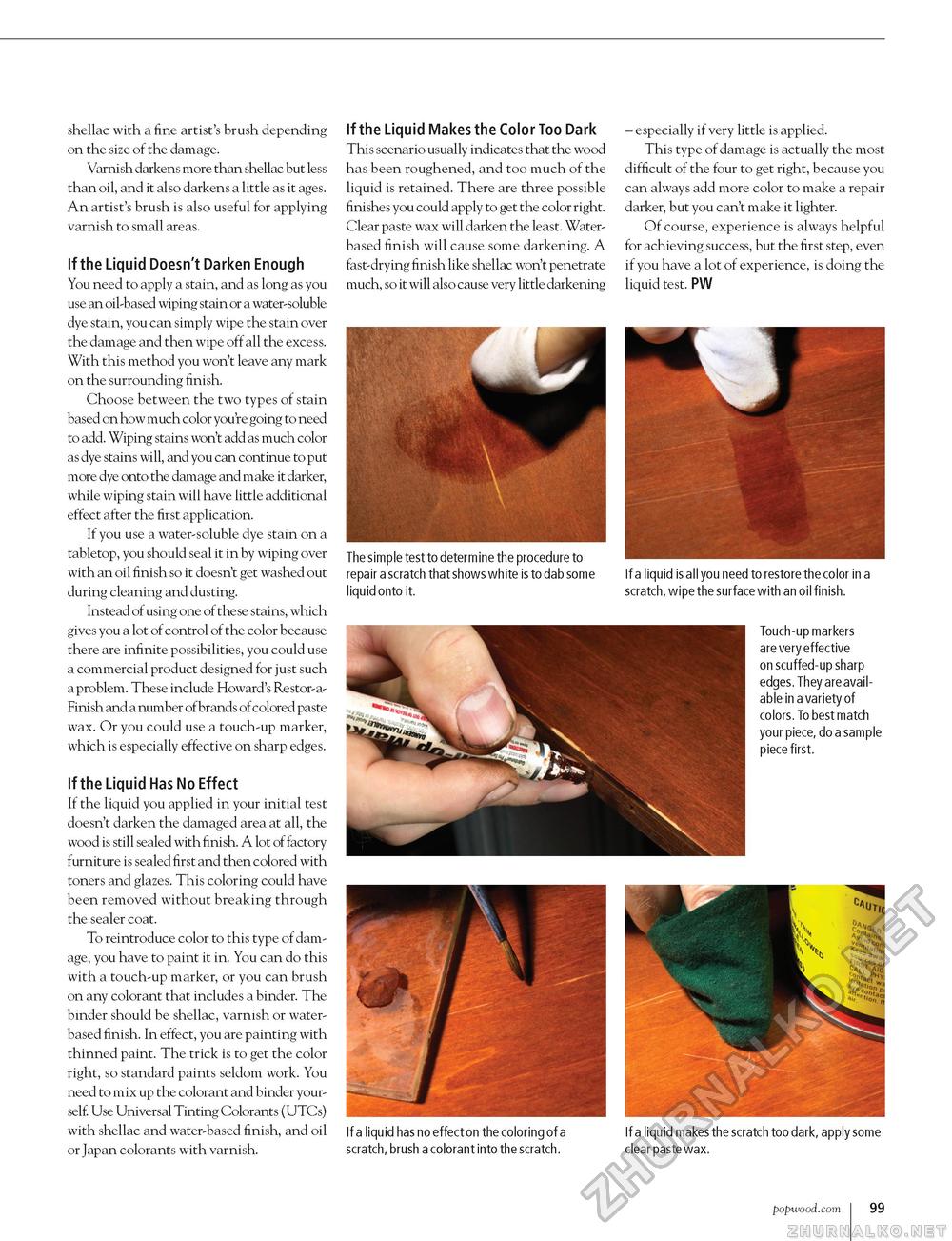Popular Woodworking 2005-02 № 146, страница 104
shellac with a fine artist's brush depending on the size of the damage. Varnish darkens more than shellac but less than oil, and it also darkens a little as it ages. An artist's brush is also useful for applying varnish to small areas. If the Liquid Doesn't Darken Enough You need to apply a stain, and as long as you use an oil-based wiping stain or a water-soluble dye stain, you can simply wipe the stain over the damage and then wipe off all the excess. With this method you won't leave any mark on the surrounding finish. Choose between the two types of stain based on how much color you're going to need to add. Wiping stains won't add as much color as dye stains will, and you can continue to put more dye onto the damage and make it darker, while wiping stain will have little additional effect after the first application. If you use a water-soluble dye stain on a tabletop, you should seal it in by wiping over with an oil finish so it doesn't get washed out during cleaning and dusting. Instead of using one of these stains, which gives you a lot of control of the color because there are infinite possibilities, you could use a commercial product designed for just such a problem. These include Howard's Restor-a-Finish and a number ofbrands of colored paste wax. Or you could use a touch-up marker, which is especially effective on sharp edges. If the Liquid Has No Effect If the liquid you applied in your initial test doesn't darken the damaged area at all, the wood is still sealed with finish. A lot of factory furniture is sealed first and then colored with toners and glazes. This coloring could have been removed without breaking through the sealer coat. To reintroduce color to this type of damage, you have to paint it in. You can do this with a touch-up marker, or you can brush on any colorant that includes a binder. The binder should be shellac, varnish or water-based finish. In effect, you are painting with thinned paint. The trick is to get the color right, so standard paints seldom work. You need to mix up the colorant and binder yourself. Use Universal Tinting Colorants (UTCs) with shellac and water-based finish, and oil or Japan colorants with varnish. If the Liquid Makes the Color Too Dark This scenario usually indicates that the wood has been roughened, and too much of the liquid is retained. There are three possible finishes you could apply to get the color right. Clear paste wax will darken the least. Water-based finish will cause some darkening. A fast-drying finish like shellac won't penetrate much, so it will also cause very little darkening - especially if very little is applied. This type of damage is actually the most difficult of the four to get right, because you can always add more color to make a repair darker, but you can't make it lighter. Of course, experience is always helpful for achieving success, but the first step, even if you have a lot of experience, is doing the liquid test. PW repair a scratch that shows white is to dab some If a liquid is all you need to restore the color in a liquid onto it. scratch, wipe the surface with an oil finish.
Touch-up markers are very effective on scuffed-up sharp edges. They are available in a variety of colors. To best match your piece, do a sample piece first. f a liquid has no effect on the coloring of a If a liquid makes the scratch too dark, apply some scratch, brush a colorant into the scratch. clear paste wax. popwood.com 99 |








